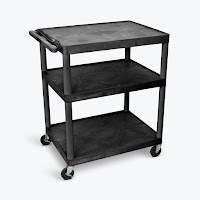Flame Resistant Vests
From struck-by incidents to trips and falls, hazards abound in any workplace, so much so that the Occupational Safety and Health Administration (OSHA) requires workers to put on applicable personal protective equipment.
But if there’s one safety apparel that isn’t as well-known as the others, it’s FR clothing. FR or flame-resistant apparel is designed to protect wearers against arc flashes, electrical explosion, or thermal exposure. These hazards are typically caused by phase-to-phase faults, electrical arc faults, or dust or corrosion buildup in machines.
One of the most common types of FR clothing is a flame-resistant vest. Flame-resistant vests offer secondary protection to wearers exposed to intermittent arc flash hazards. Designed to self-extinguish, these vests reduce burn injuries and provide wearers with a chance of survival during electrical arcs.
Arc ratings are divided into four categories:
Modacrylic safety vests are a great choice as they can be blended with other flame-resistant fabrics. Nomex and Kevlar are also flame-resistant, and they don’t need to be combined with other materials to offer arc flash protection. And for the utmost comfort, you can opt for flame-resistant mesh vests, which are breathable and perfect for warm weather.
But if there’s one safety apparel that isn’t as well-known as the others, it’s FR clothing. FR or flame-resistant apparel is designed to protect wearers against arc flashes, electrical explosion, or thermal exposure. These hazards are typically caused by phase-to-phase faults, electrical arc faults, or dust or corrosion buildup in machines.
One of the most common types of FR clothing is a flame-resistant vest. Flame-resistant vests offer secondary protection to wearers exposed to intermittent arc flash hazards. Designed to self-extinguish, these vests reduce burn injuries and provide wearers with a chance of survival during electrical arcs.
Who Needs to Wear Flame-Resistant Vests?
OSHA requires employees and employers in specific lines of work to buy FR safety vests. In particular, those working in places with the following hazards should wear these vests:- Combustible dust - Workers in paper and pulp factories and food processing plants are usually exposed to this hazard.
- Electrical arc - This hazard covers electricians, machinists, and utility workers.
- Flash fire - Workers in pharmaceutical, oil refining, and chemical industries are often subjected to this hazard.
What Should You Look for in Flame-Resistant Vests?
Arc Rating
Flame-resistant vests have to comply with the standards of OSHA 1910.269 and the American National Standards Institute (ANSI) 107. They should have a rating of over 4 cal/cm2 (or small calories of heat energy per square centimeter). Plus, they have to be made of a type of fabric that won’t ignite when exposed to flash fires or electrical arcs.Arc ratings are divided into four categories:
- Category 1 - Minimum arc rating of 4 cal/cm2
- Category 2 - Minimum arc rating of 8 cal/cm2
- Category 3 - Minimum arc rating of 25 cal/cm2
- Category 4 - Minimum arc rating of 40 cal/cm2
Material
As was previously mentioned, you have to get a vest made of flame-resistant material. That way, you can be protected from hazardous thermal exposure.Modacrylic safety vests are a great choice as they can be blended with other flame-resistant fabrics. Nomex and Kevlar are also flame-resistant, and they don’t need to be combined with other materials to offer arc flash protection. And for the utmost comfort, you can opt for flame-resistant mesh vests, which are breathable and perfect for warm weather.

Comments
Post a Comment